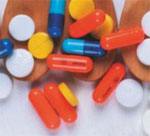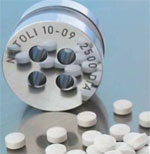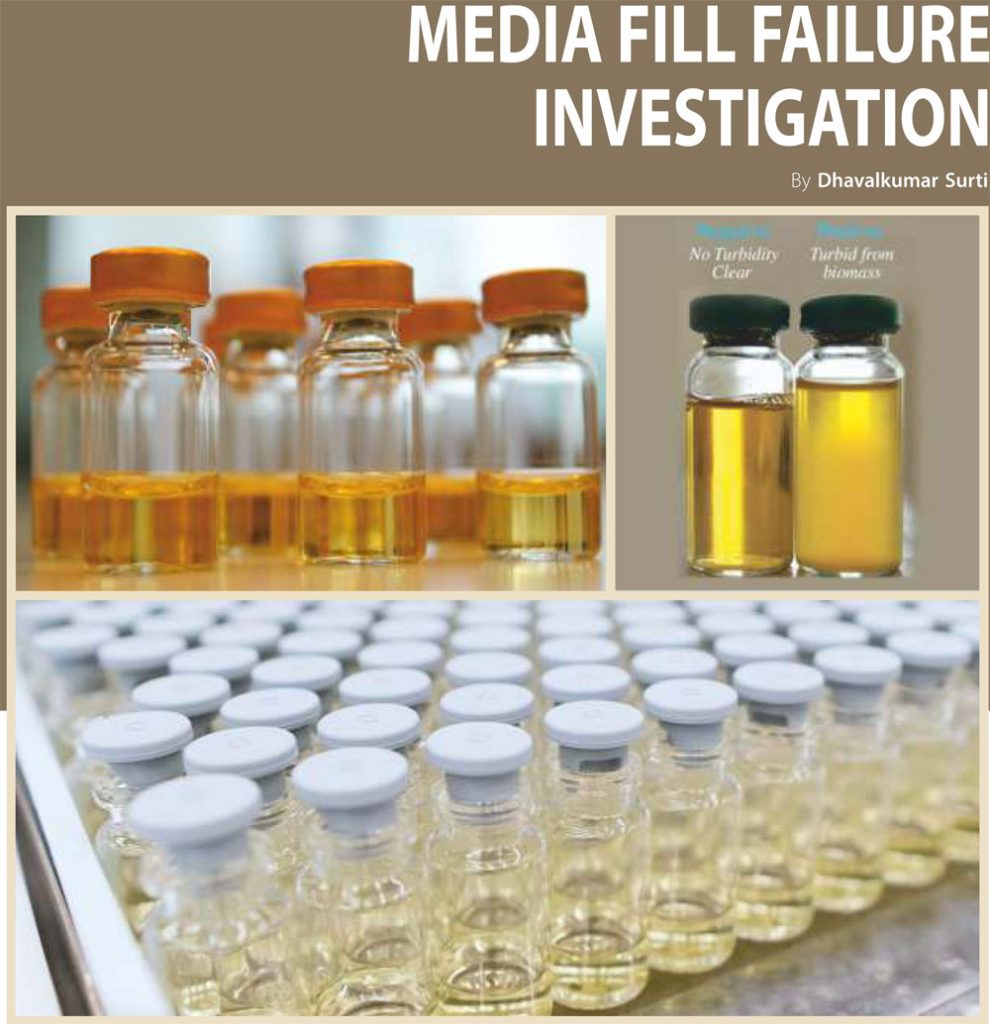
Those who are involved in the aseptic manufacturing, injectable manufacturing, sterile product manufacturing, must be aware that media fill is an essential compliance part of the industry and we have to perform media fills at initial start-up of aseptic filling line as well as periodically. And if we have a media fill failure, it is very important that we must investigate it.
Media fill failure investigation is very critical and it takes lots of efforts, knowledge and experience to conclude a media fill failure investigation. In this specific article, I will share some of my thoughts on how we can effectively investigate media fill failure.
Gross media fill failures
What happens if you manufacture media, you filter it, and the next day you observe that it is failed into the sterile holding vessel itself? Or when after certain time of filling, you observe that the media is already contaminated? How can we overcome such a gross failure, so that it will not impact or it will save the time, efforts and resources that are gone into the media fill?
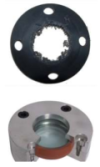 With respect to the holding vessel or the sterile holding vessel, where we are filtering the media and storing it, one of the reasons that lead to the failure are the gaskets. If the gaskets are not totally integral, it will not pass into the leak test. If we are not checking the gasket frequently, then by the time the gasket starts to rupture, it may not provide the adequate leak proof sealing.
With respect to the holding vessel or the sterile holding vessel, where we are filtering the media and storing it, one of the reasons that lead to the failure are the gaskets. If the gaskets are not totally integral, it will not pass into the leak test. If we are not checking the gasket frequently, then by the time the gasket starts to rupture, it may not provide the adequate leak proof sealing.
There are many gaskets into the system. We have gaskets for the view glasses, for the joints, into the process piping, at the inlet, etc. These gaskets should be checked periodically and there should be a replacement frequency for them. Before the media fill, you must ensure that all the gaskets are intact, integral, and there are no damages.
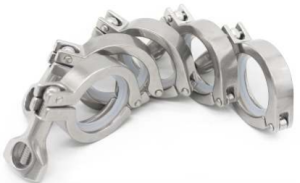 Secondly, we have so many connections onto the tank. If the clamp is not properly tightened, if there are some blinds which are not properly connected, and since we don’t open the view glass often, the view glass connection may not be integral every time. Hence we have to ensure that all our connections in the vessels are intact, integral, and will not lead to any leakages during the media fill.
Secondly, we have so many connections onto the tank. If the clamp is not properly tightened, if there are some blinds which are not properly connected, and since we don’t open the view glass often, the view glass connection may not be integral every time. Hence we have to ensure that all our connections in the vessels are intact, integral, and will not lead to any leakages during the media fill.
 Another thing is the inside surface or inner surface cleaning of the sterile vessels. Many times it is observed that, for the sterilization validation some people, due to lack of awareness, use tapes to stick biological indicators or the sensors, and these tapes may not get removed completely. They are at times in such a location that they will not be easily visible.
Another thing is the inside surface or inner surface cleaning of the sterile vessels. Many times it is observed that, for the sterilization validation some people, due to lack of awareness, use tapes to stick biological indicators or the sensors, and these tapes may not get removed completely. They are at times in such a location that they will not be easily visible.
 So, before you go for a media fill, inspect your vessel thoroughly from inside and ensure that there is no glue, no tapes inside, as this leads to micro crevices which will protect microorganism during the SIP process. They can provide sheath for covering, so that your SIP cycle may not kill those microorganisms and can lead to growth during your media fill, and to gross failure.
So, before you go for a media fill, inspect your vessel thoroughly from inside and ensure that there is no glue, no tapes inside, as this leads to micro crevices which will protect microorganism during the SIP process. They can provide sheath for covering, so that your SIP cycle may not kill those microorganisms and can lead to growth during your media fill, and to gross failure.
 Therefore you have to thoroughly inspect your vessel from inside before you go for the media fill, and this process should be a routine. It should not be the case that we are very cautious during the media fill, and very relaxed during our commercial production. Commercial production is our business and we have to be very focused and we must have the same attention as we have during the media fill.
Therefore you have to thoroughly inspect your vessel from inside before you go for the media fill, and this process should be a routine. It should not be the case that we are very cautious during the media fill, and very relaxed during our commercial production. Commercial production is our business and we have to be very focused and we must have the same attention as we have during the media fill.
 There should be frequent checking of the vessel. Your cleaning program should ensure that there is daily check or check after every cleaning cycle. So that there is no contamination, no rough surfaces, and no glue within the tank which can lead to either media fill failure or product contamination.
There should be frequent checking of the vessel. Your cleaning program should ensure that there is daily check or check after every cleaning cycle. So that there is no contamination, no rough surfaces, and no glue within the tank which can lead to either media fill failure or product contamination.
Another reason for the gross failure is your assembling of filling assembly itself. We know, for the sterile manufacturing we have to set up filling assembly which will fill the product into the vials or ampoules or pre-filled syringes. The assembling should be properly wrapped and properly sterilized. During the transfer after unloading from the autoclave, you transfer through mobile laminar airflow unit to your filling machine. If the transfer is not kept continuously under Grade A, it can have contamination on the upper surface, and ultimately that contamination can land into the final filling assembly, and can contaminate the media.
Hence your sterilization, your wrapping, and your transfer should be validated through smoke studies. So that you can be sure that there is continuous laminar airflow or Grade A air provided to the filling assembly. It should be a validated process, and should be thoroughly verified through smoke studies, so that the entire process is not creating aseptic intervention which can lead to contamination in your filling assembly.
 So, these are the three important points:
So, these are the three important points:
- One, aseptic connections. The aseptic connection gaskets, view glass, and everything have to be checked.
- The second point is the inner surface of the sterile holding vessel.
- Third point is the assembling process. All should be thoroughly checked, validated and verified. Only then you should go for media fill.
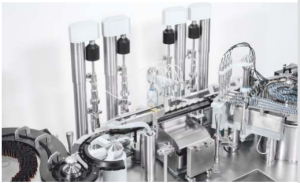 If you are not sure of these things, you should first be sure before going for media fill. Because once there is a media fill failure, it will be a very long investigation and we have to put our manpower, resources and most importantly, ‘Time’, and it will ultimately delay our production and other activities.
If you are not sure of these things, you should first be sure before going for media fill. Because once there is a media fill failure, it will be a very long investigation and we have to put our manpower, resources and most importantly, ‘Time’, and it will ultimately delay our production and other activities.
Intermittent media fill failures
We discussed about the gross failure of media fill. Let us now examine the failures which are not gross. For example, we are getting two, three or four vials intermittently having contamination during the entire course of media fill. We will understand how we can investigate this intermittent or a few of contaminated units during the media fills.
The first and foremost part of investigating this single or two or three contaminated units is to understand at exactly what time the failure occurred. For that we have to track the entire media fill activity. Right from the beginning of the assembling activity through to filling, what were the interventions, and how many people were involved. We have to tabulate everything, that during what time which activity was performed, assembling was started at what time, filling was started at what time, the number of interventions, the duration, time, and the personnel who were involved. Everything we have to put in a sort of a table, which will give a clear idea that these were the activities performed throughout the course of media fill.
Now we have to correlate it with the failure contaminations. For example, we have 100 trays of media filled containers. Out of 100, we have failure in 10th, 15th, or maybe in 38th or 46th trays. In order to understand what happened during filling of those trays, we have to see when those trays were filled what was the activity. That is the simplest way to correlate the activity against the failure.
 If there are certain new interventions, unusual practices which were observed during this time, you can correlate them and for that it is most important that we should record each and every intervention, each and every activity during the media fill. Video recording is also very helpful for the purpose of investigation. It is not a mandatory or a regulatory requirement to have video recording, but video record helps to investigate, helps to train people. ‘Guidance for Industry: Sterile Drug Products Processed by Aseptic Processing-Current Good Manufacturing Practice’ states about video recording that ‘Video recording of a media fill may serve as a useful aide in identifying personnel practices that could negatively affect the aseptic process.’
If there are certain new interventions, unusual practices which were observed during this time, you can correlate them and for that it is most important that we should record each and every intervention, each and every activity during the media fill. Video recording is also very helpful for the purpose of investigation. It is not a mandatory or a regulatory requirement to have video recording, but video record helps to investigate, helps to train people. ‘Guidance for Industry: Sterile Drug Products Processed by Aseptic Processing-Current Good Manufacturing Practice’ states about video recording that ‘Video recording of a media fill may serve as a useful aide in identifying personnel practices that could negatively affect the aseptic process.’
If you are not able to correlate any activity with the failure at a specific time point, then we have to go over other things like what was the environmental condition, what was the air velocity, what was the HEPA filter integrity, are there any failure with the HEPA filter, are there any concern, are there any cleaning concerns, was the maintenance of the machine done properly, is there anything within the system, was the assembling not proper, etc. We have to go into the depth of the things.
If the obvious co-relatable cause is not identified, then we have to go for detailed investigation. We should check cleaning, sanitization, sterilization, and SIP. SIP failure will mostly lead to gross failure, but still we need to check whether there were any new operators or they have done any new intervention. We have to see whether we have done anything unusual. In the entire sterilization set up, any component or part can remain non-sterile. For example, one of the connections in filtration vessel skid, any joint or dead leg in system can remain non-sterile.
Apart from this, while capping, (if it is a vial), we should look at how we have the stopper. If it is a PFS, was there any unusual observation during the filling. So, everything we have to consider while we are investigating the unusual few which are not throughout the batch, but only at some time point. This is the way we can understand, we can go in deep and investigate, and find the root cause of the failure.
Media fill failure in complex manufacturing
Here we are talking about the media fill failures which are associated with the complex manufacturing system. By complex system, I mean to say where there are CIP and SIP skids, and where lots of vessels are involved in the manufacturing system.
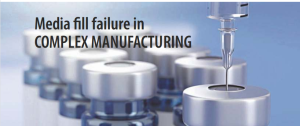 Yes, it is good to have skids in the system, because it prevents aseptic connections. But the challenges with respect to the skids are the same as with manual connection. When we have lots of skids, lots of vessels inside our manufacturing system, there are many gaskets and clamps coming into the picture. We have to ensure that all the connections, all the clamps or the gaskets are intact and properly sealed.
Yes, it is good to have skids in the system, because it prevents aseptic connections. But the challenges with respect to the skids are the same as with manual connection. When we have lots of skids, lots of vessels inside our manufacturing system, there are many gaskets and clamps coming into the picture. We have to ensure that all the connections, all the clamps or the gaskets are intact and properly sealed.
When we are performing media fill for a complex manufacturing system which involves multiple number of vessels, we have to first ensure that our sterilization is robust. When I say robust, it has to be validated considering all the requirements, all the connections, and all the worst case scenario which we can think of based on our assessment. We have to ensure that there are no possibilities of not achieving the temperature within a specific area.
For example, if you have a skid of 2 to 3 filtration vessels, the farthest end of this series can have the least exposure to the steam. Therefore, you have to place sensors in all your vessels, in all your critical connections, and also at the drain point of the vessels including last vessel in your series of filtration. We have to ensure that our SIP is properly validated, so that each and every vessel in our filtration skid, and each and every connection till the drain point are achieving the desired sterilization temperature.
If it is not properly ensured, not properly assessed, you can get a gross failure in media fill. It is important that you assessed all your placement of thermocouples within the SIP skid for the filtration vessels in the complex manufacturing system, and ensured that both the temperature and biological indicators are meeting the acceptance criteria. Till that assurance is not done, please don’t proceed for any further processing, including media fill.
 Once you have robust SIP validation, then you plan for your water trial, at least one water trial. What mistake the majority of people are making is that they are directly going for the media fill before taking a water trial of the entire system. You have to take a water trial or placebo trial to ensure that your manufacturing, your filtration and your filling is working properly throughout the system. Only after ensuring this, you go for the next step.
Once you have robust SIP validation, then you plan for your water trial, at least one water trial. What mistake the majority of people are making is that they are directly going for the media fill before taking a water trial of the entire system. You have to take a water trial or placebo trial to ensure that your manufacturing, your filtration and your filling is working properly throughout the system. Only after ensuring this, you go for the next step.
If you have not done the water trial or you have not done the placebo trial with the product or simulating the product, then there are chances that you will find surprises during the media fill, which can lead to media fill failure. This surprises, if arise during the media fill, will be a black spot on your system. To avoid that, it is advised to conduct a water trial with the system. Once you have done, you are sure that your water trial is successful and there are no leakages.
One of the important aspects of the skid system, where you have multiple vessels and multiple connections within the system,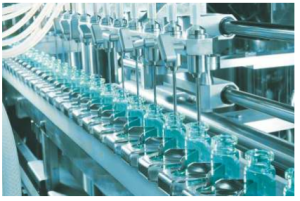 is conducting leak test for the entire system. You have to ensure that you are performing leak test before your sterilization cycle, and not after any intervention. No further connection or intervention should happen once you have done your complete leak test. Once your entire system is leak proof, you can go for the process, which can be media fill or the product.
is conducting leak test for the entire system. You have to ensure that you are performing leak test before your sterilization cycle, and not after any intervention. No further connection or intervention should happen once you have done your complete leak test. Once your entire system is leak proof, you can go for the process, which can be media fill or the product.
 This is one way of avoiding the media fill failure in the complex system where we have multiple vessels and SIP involved. Yes, of course, it will take some time. It can take a week to evaluate all these things, but it is better to spend a week on preparation rather than spending two months in investigating your media fill failure.
This is one way of avoiding the media fill failure in the complex system where we have multiple vessels and SIP involved. Yes, of course, it will take some time. It can take a week to evaluate all these things, but it is better to spend a week on preparation rather than spending two months in investigating your media fill failure.
Media fill failure investigation in complex manufacturing
We discussed how to prevent media fill failure in the complex manufacturing system. Now let us talk about how to investigate the media fill failure in a complex manufacturing system.
 How to investigate media fill failure in a complex system which involves multiple CIP and SIP skids, and multiple connections? When you identify that you have media fill failure, all the technical persons who know the process should go to the area and take an overview of the entire system, which is the first and foremost requirement. Just go there to get the first hint or first intimation from the production floor about the contamination.
How to investigate media fill failure in a complex system which involves multiple CIP and SIP skids, and multiple connections? When you identify that you have media fill failure, all the technical persons who know the process should go to the area and take an overview of the entire system, which is the first and foremost requirement. Just go there to get the first hint or first intimation from the production floor about the contamination.
Ask the people if whatever they have done are part of the procedure, is it mentioned clearly in the system. If you don’t go immediately to the area, a lot of information can be lost. The operators who are conducting the media fill may forget. So, just go to the area and ask questions:
- Have they done anything different?
- Was there any abnormality?
- Was there any connection which was not done properly?
- What they feel could have led to the failure?
These three or four simple questions can give you the correct outcome. Then analyze the entire process for yourself, check each and every connections, each and every gasket, and each and every parameter, especially whether we have proper sterilization cycle done, and whether we have done all the steps as per the SOP.
Media fill is a lengthy process and it takes two to three days. So there are high probabilities where people may skip or forget or rush with some of the steps which are critical to the process. If these steps are not done properly, it can lead to introduction of the contamination.
For example, in a complex manufacturing system there are a lot of connections which are to be done before sterilization and after sterilization. Once you connect after sterilization it ensures sterility, but there are high probability that some connections are done properly while others are not. This can lead to introduction of the microbial contamination whether you have Grade A by B or Grade A by C, or you have isolator. It can happen in any of the area, and I have seen failures in all these manufacturing processes, in all the type of technologies, be it LAF, RABS or isolators, just because the connections are not done properly or not defined properly into the SOP.
So, ask the people whether they have done all the connections correctly. If the answer is yes, ask whether they have done leak test of the entire system. If yes, then ask more questions.
- After the leak test, have you done anything or have you disturbed any connection?
- Have you made any connection after your leak test passing or after the SIP? Have you modified anything?
- Have you checked or corrected anything after the SIP or after the leak test done?
This sort of information on the first hand or during the immediate investigation will help you to understand what might have gone wrong during your media fill leading to the failure. If you find the abnormality, it is well and good, and you have the root cause. Yes this connection was not proper or this sensor was not properly placed or this gasket was not properly kept which might have introduced the contamination into the system leading to media fill failure.
But if you are not finding the root cause, then list out all the information, check with the process, check with the procedure. Whether you have clearly defined what is to be done to ensure that it maintains the sterility for the system. Whether it is written either into the procedure or into the batch manufacturing record or media fill batch record or media fill protocol.
If the clear-cut instructions are not written step by step, how to connect the gasket, how to place the gasket, how to connect a clamp, how to place a sensor, how to make one-to-one connection, or how to make the aseptic connections, then there are a lot of chances that people by their own skill, by their own experience will be doing the activity. One person might be doing correctly, while other person may not be doing the same activity in the correct way.
If there are such gaps, identify those gaps and fill it or make it a part of your procedure or a media fill protocol or a media fill batch record. By that way you can prevent the reoccurrence.
 The other important aspect is understanding aseptic manufacturing. If the personnel working in the area are not acquainted with aseptic manufacturing, how to work in classified area, what is Grade C, what is Grade B, what is Grade A or what is isolator, and if they are not aware clearly how it plays an important role in sterility assurance, then there are lots of chances that they will think whatever they are doing is right, which can lead to introduction of contamination into your system.
The other important aspect is understanding aseptic manufacturing. If the personnel working in the area are not acquainted with aseptic manufacturing, how to work in classified area, what is Grade C, what is Grade B, what is Grade A or what is isolator, and if they are not aware clearly how it plays an important role in sterility assurance, then there are lots of chances that they will think whatever they are doing is right, which can lead to introduction of contamination into your system.
 So, the knowledge of your people about your systems, about aseptic manufacturing, about aseptic connection is very, very important, irrespective of they are operating in Grade A, Grade B, RABS, open RABS, closed RABS or isolators. If the people or the personnel who are doing the activity are not aware of the importance of aseptic practices, the importance of connection, the importance of sterilization, then it can lead to media fill failure, and it is a frequently occurring or frequently observed scenario when we investigate media fill failure.
So, the knowledge of your people about your systems, about aseptic manufacturing, about aseptic connection is very, very important, irrespective of they are operating in Grade A, Grade B, RABS, open RABS, closed RABS or isolators. If the people or the personnel who are doing the activity are not aware of the importance of aseptic practices, the importance of connection, the importance of sterilization, then it can lead to media fill failure, and it is a frequently occurring or frequently observed scenario when we investigate media fill failure.
 About the Author
About the Author
Dhavalkumar Surti has more than 18 years experience in injectable manufacturing, validation, quality assurance and new facility projects. He is with pharmaceutical industry in India from 2003, working with reputed companies like Dr. Reddy’s, Sun Pharmaceuticals, Zydus Pfizer Oncology, Emcure Pharmaceuticals and Aculife Healthcare. He has core experience in aseptic technique, freeze drying, sterilization validation, smoke studies, SOP writing, investigations, training and media fills.



